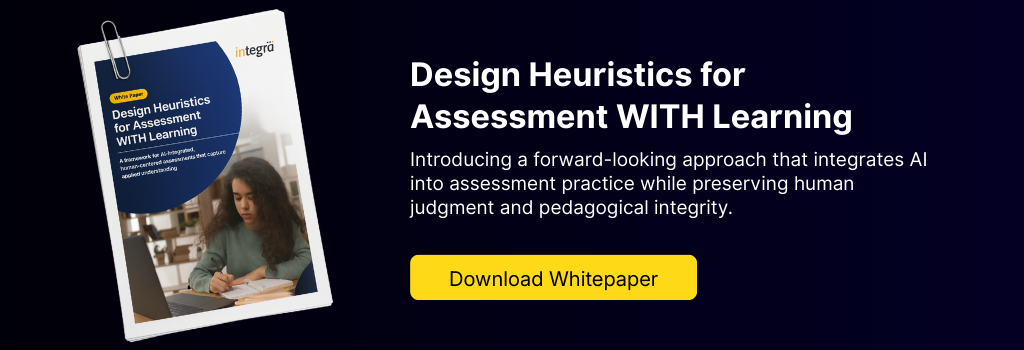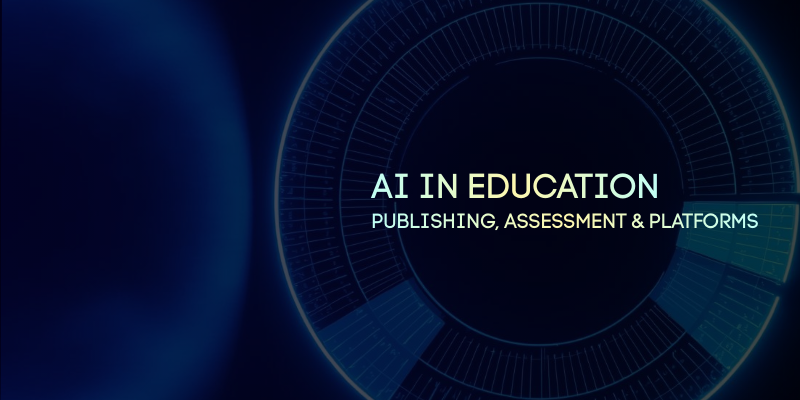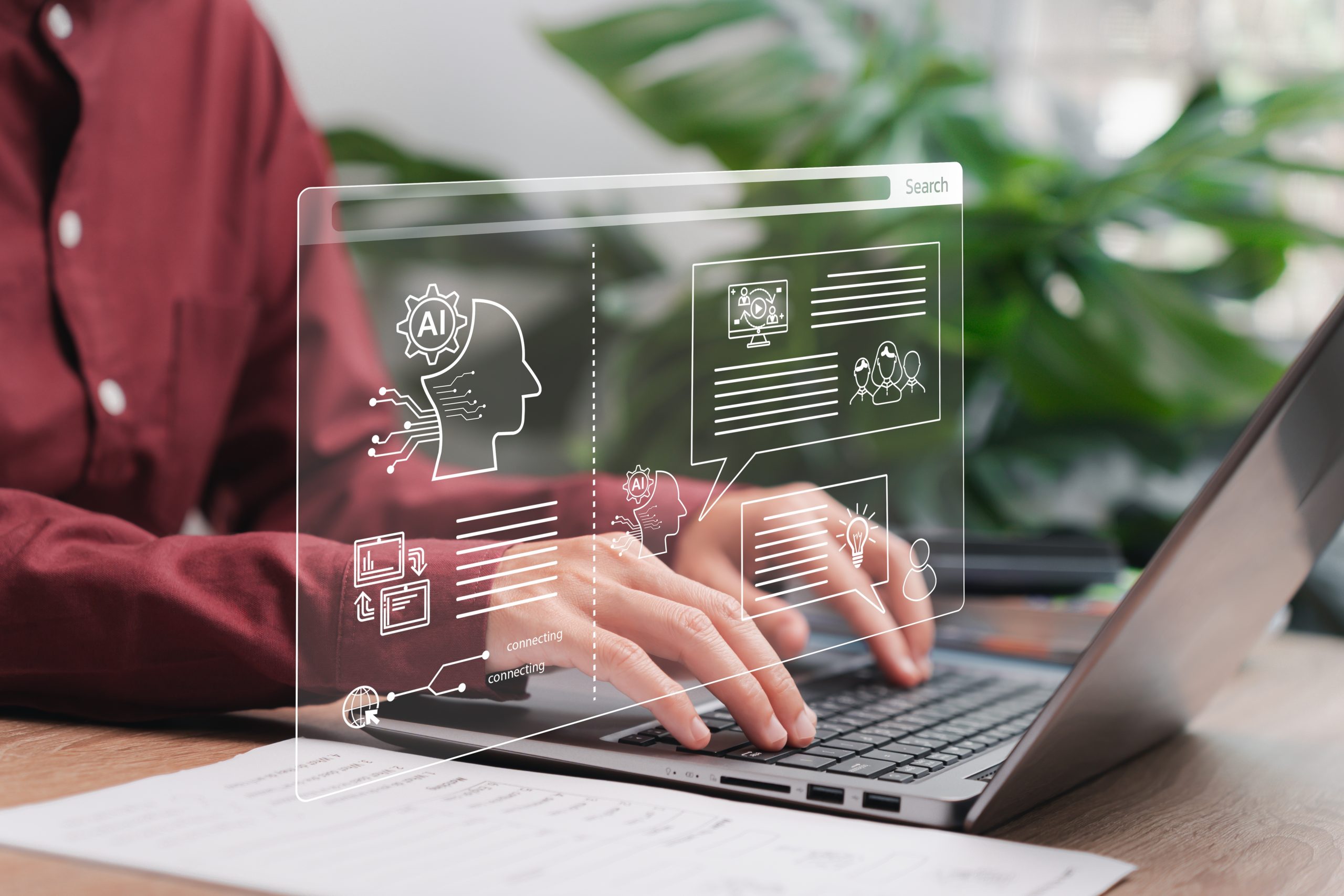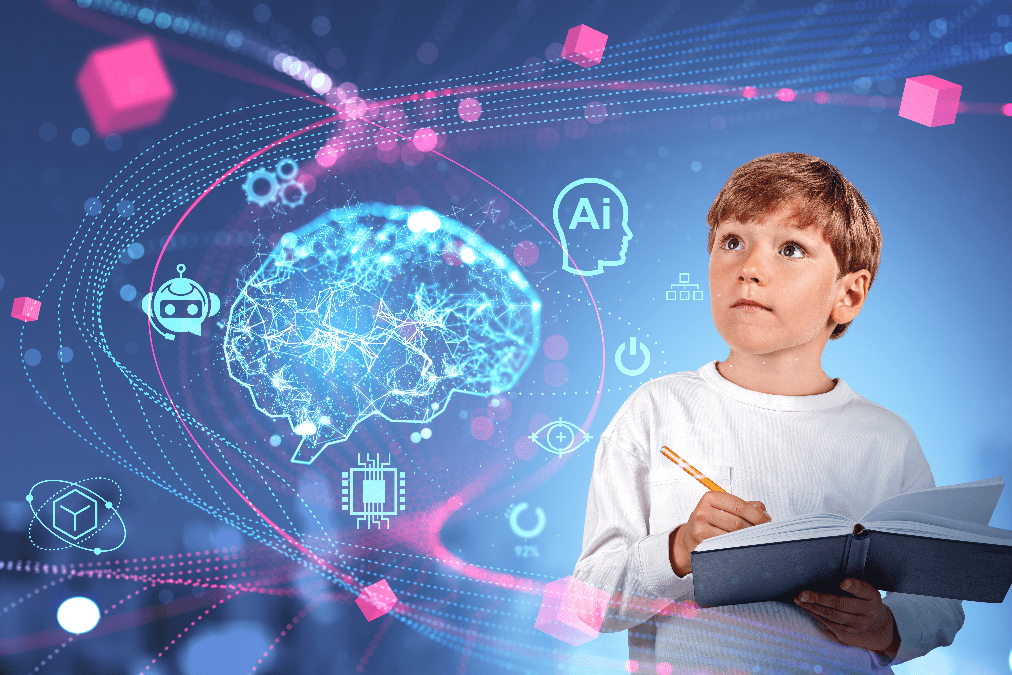A Shifting Landscape for Educational AI
As 2026 approaches, AI adoption in education appears to be moving into a more practical phase. For content, product, and technology leaders, the focus is shifting away from whether AI belongs in learning systems and toward how it may be designed, governed, and sustained at scale.
At the same time, long-standing boundaries between publishing, assessment, and platforms are beginning to blur. AI systems are increasingly positioned across these layers, making it more feasible for feedback, evaluation, and adaptation to occur closer to the learning experience itself rather than as a separate downstream process.
Across publishing, platforms, and instructional delivery, a consistent pattern is starting to take shape: AI systems tend to deliver more reliable results when they are built on clear structures, well-defined roles, and realistic expectations.
Below are five trends shaping how AI is likely to be applied in education over the coming year. Each reflects shifts already underway, framed for leaders responsible for publishing, assessment design, product development, and learning infrastructure.
1. Expert-Led Content Development Supported by AI Systems
Content creation workflows are becoming increasingly hybrid. AI tools are being used to support tagging, drafting, localization, and item generation, while content and editorial experts continue to own instructional quality, accuracy, and review.
What this looks like in practice:
- AI-assisted generation of practice questions, summaries, and alternative explanations aligned to existing content.
- Automated tagging and classification to reduce manual production effort.
- Editorial review processes that validate AI-generated outputs before release.
Why it matters:
Treating AI as part of the production pipeline, rather than a shortcut, can help teams increase throughput without lowering standards. Organizations that define clear review and governance models are finding AI useful for scale, not substitution.
2. AI-Ready Content Architecture
AI systems increasingly sit on top of existing curriculum libraries. Whether they support personalization, retrieval, or generation, their effectiveness depends on how content is structured well before models are applied. Many organizations are discovering that while their materials are digital, they are not designed for machine use.
What this looks like in practice:
- Curriculum audits focused on structure rather than pedagogy, identifying oversized lessons, unclear learning objectives, and missing metadata.
- Rebuilding content at the concept or skill level so individual components can be retrieved, recombined, and sequenced with less manual intervention.
- Expanding metadata beyond standards alignment to include prerequisites, cognitive demand, and instructional intent.
Why it matters:
AI systems do not interpret context the way humans do. When content is modular and well-tagged, AI tools can support personalization and adaptation with lower risk of distorting meaning. For many publishers and platforms, content architecture is emerging as both a constraint and an opportunity in AI adoption.
3. Multi-Modal Assessment and AI-Assisted Evaluation
As learning outputs diversify, assessment models are being pushed beyond essays and exams. AI tools are being applied to help evaluate presentations, projects, code, and collaborative work using more consistent criteria.
What this looks like in practice:
- Shared rubrics applied across written, visual, oral, and interactive submissions.
- AI-supported analysis of speech, images, code, and contribution logs.
- Faster formative feedback, with educators retaining final judgment.
Why it matters:
Multi-modal assessment has long been limited by grading workload and consistency. AI can lower some of these barriers, but only when scoring logic is transparent and human review remains central. The goal is better alignment between instruction and evaluation, not automation for its own sake.
Why it matters:
Group learning is central to classroom instruction but difficult to observe consistently at scale. AI can provide additional visibility into participation and engagement, but only when educators retain control. The value lies in surfacing patterns, not directing social interaction.

4. Predictive Personalization and Early Support
Adaptive systems are moving beyond responding to performance after the fact. By analyzing learner behavior patterns, newer platforms aim to anticipate where students may struggle and surface support earlier in the learning process.
What this looks like in practice:
- Signals based on response time, error patterns, and activity sequences rather than single assessment scores.
- Proactive recommendations for review activities or alternative explanations.
- Alerts that help teachers prioritize attention before learners fall behind.
Why it matters:
Predictive insights shift assessment data from reporting toward decision support. Used carefully, they can help educators intervene earlier. Used poorly, they risk overconfidence in probabilistic outputs. This distinction is becoming increasingly relevant for leaders evaluating these systems.
5. AI Support for Collaborative Learning
Most early AI tools in education were designed for individual use, such as tutoring, practice, or feedback. That focus is beginning to broaden. New tools are being introduced to support group-based learning by analyzing participation patterns and surfacing prompts during collaborative work.
What this looks like in practice:
- Systems that monitor discussion flow and flag uneven participation or stalled progress during group activities.
- AI-generated prompts or questions that teachers can choose to introduce during discussions or projects.
- Dashboards that help educators see collaboration patterns across teams rather than focusing only on individual performance.
AI in Education: 2026 and Beyond
Across all five trends, a common theme stands out: progress depends less on new models and more on design discipline. Content structure, workflow clarity, and governance will influence whether AI tools remain experimental or become dependable parts of educational systems.
For leaders in product, technology, and content operations, 2026 is shaping up to be a period of consolidation, where expectations around AI become more grounded and more precise.
Whether you are updating existing materials or undertaking large-scale content transformation, Integra’s Content Engineering for AI team provides the bandwidth and expertise needed for modular design, metadata frameworks, and AI-ready content architecture. We can work alongside your teams to accelerate production and ensure consistency.





